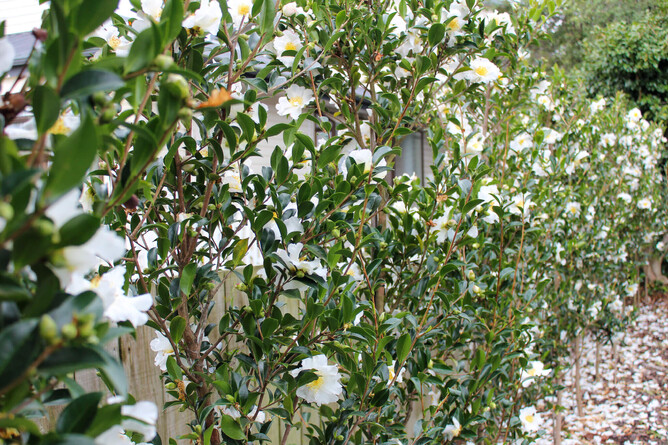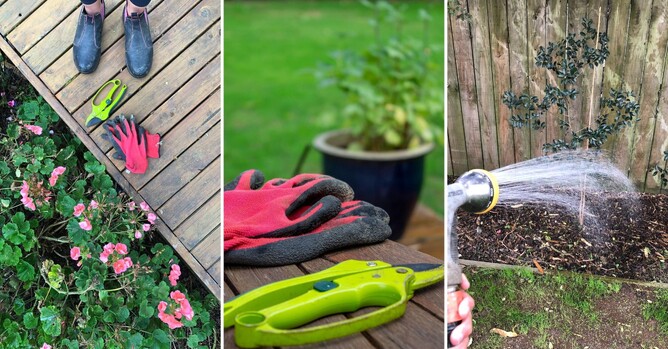Don’t store your gardening tools or boots away just yet. Your garden still needs help and attention during winter. It’s also a great time to think about what to plant for the next season and how you want your space to look.
Tip 1: Tree Pruning
Pruning in winter is always highly recommended. But, of course, you need to research first and determine the best time to prune your trees.
Deciduous trees lose their leaves during the dormant season. Therefore, pruning and inspection are a lot easier. An arborist can check for cracks, damages and branches to remove. Weak or dead branches are removed to avoid any damage caused by storms or winter winds.
Pruning encourages new growth in spring. It also stops pests, diseases and fungi from spreading since they are hibernating.
Get your trees professionally pruned by our team, and contact us for more pruning advice.
Tip 2: Mulch
Mulch is our garden’s best friend all year long.
During winter, mulch will keep the weeds away, the soil warm and absorbs the water, keeping it hydrated.
Mulch shouldn’t touch the tree's base; spread a thin layer around it. Visit our mulch article page to visualise better how mulch is spread around the tree.
Always add old rotten, not new green mulch to condition the soil. This is because the fresh mulch creates an imbalance in the ground. But, when you add old mulch, your soil will have more nutrients and organic matter.
Tip 3: Watering Trees
We are very lucky with our natural winter rainy season providing excessive rain in New Zealand.
Sometimes the weather can be unexpected, with no rain or sunny days. Think about younger trees that need more water than other mature trees on those sunny days. This is because their roots are smaller and can’t find water in the surrounding soil like established trees. Remember, tree roots don’t go dormant during winter.
Don’t forget always to check if the soil needs hydration before watering them.
Tip 4: Protecting From Frost
Some plants and trees are more susceptible to freezing. For example, trees with thick bark, furry leaves or a large canopy will have higher protection from frost.
There are many methods you can use to protect your trees from frost:
Cover your plants and trees with a lightweight fabric. This technique will trap the heat from the soil during the day and keep them warm at night.
Water foliage to hold more heat during a frost.
Adding mulch around the trees creates a barrier between the soil and the air during the colder months.
Discover our article on protecting your trees from frost for more information.
Tip 5: Safety
Maintaining your trees during the winter has a lot to do with safety. If you notice any damages, cracks, or unhealthy trees on your property, they need to be looked at by a team of arborists. However, if you don’t inspect your garden enough during the year, it may become susceptible to problems during the winter months.
Investing your time in tree pruning, hedge trimming, and tree removal is beneficial in so many ways. As a result, your trees will be healthier and live longer.
To avoid branches breaking, bark cracking, etc., contact our team to get advice. Keeping your family and property safe is essential, especially when you have large trees around your home.
Being prepared always saves you time and money with many things in life. It is no different with keeping your trees healthy and ready for the winter.



